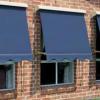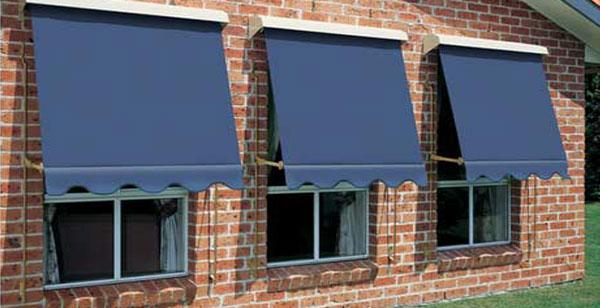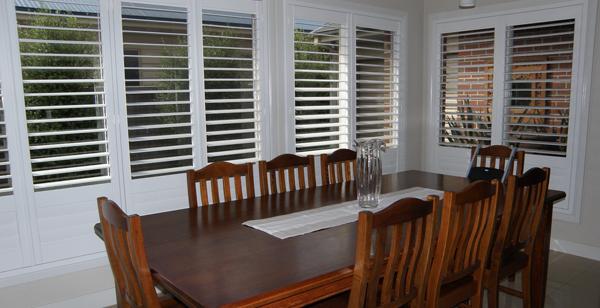
External blinds: awnings or shutters?

External blinds: awnings or shutters?
Two of the most popular types of external blinds for Australian homes are awnings and outdoor shutters. Their main function is to provide privacy, and protection from harsh sunlight and the heat of summer.
Awnings are used to shade the windows of a home from the outside. They are designed as a type of roller blind, and are made from heavy canvas or synthetic fabrics. Awnings are opened and closed by a stick, crank handle, or motorised system. The profile of an awning can be adjusted by moving a pair of metal arms that control how far the awning projects outwards.
Awnings are available in full block or e-screen light control fabrics. They come in a wide range of solid colour and striped options, to suit any type of home. Windows of all sizes can be shaded using awnings.
Awnings offer a number of practical benefits.
- Light blocking. Canvas awnings are an effective way of keeping bedrooms dark.
- Shade. Awning blinds keep out harsh sunlight that fades furnishings and furniture.
- Glare blocking. The opening and angle of awnings can be adjusted to prevent glare from falling on television and computer monitor screens.
- Heat transfer. Awnings are a layer of insulation that can help to avoid heat transfer through window glass, reducing unwanted heat loss in winter and heat gain in summer.
- Privacy. Awnings prevent the interior of a home from being viewed from the outside.
- Style. Striped awnings often give a casual Mediterranean feel to a home, while awnings in a solid colour add a touch of urban elegance.
- Ease of operation. Opening, closing and adjusting the profile of awnings are simple operations; motorised awnings that can be operated from inside the home offer the ultimate in convenience and are often used for upper storey windows.
Outdoor shutters have long been a feature of Mediterranean architecture, and are becoming increasingly popular in Australia. Wooden shutters are an aesthetically pleasing privacy and security solution, as well as offering protection from unwanted light, heat, weather and noise.
Outdoor shutters are usually made from timber, and the typical shutter design is a set of horizontal louvres encased in a frame. Shutters are fixed to the walls of the building with hinges, and are opened by swinging outwards.
Painting or coating wooden shutters with a sealing finish can help protect them from weathering.

Wooden shutters offer a number of aesthetic and practical benefits.
- Strength. Shutters are able to withstand high wind and help protect windows from flying debris, or damage during hailstorms.
- Security. Locked shutters create an effective barrier to deter intruders.
- Noise insulation. In noisy urban areas, shutters can provide effective sound insulation by blocking outside noises such as traffic.
- Glare protection. The louvres of shutters can be adjusted to deflect glare.
- Privacy. When shutter louvres are closed, the interior of your home is hidden from passing traffic.
- Ventilation. Adjusting the pitch of shutter louvres improves ventilation and takes advantage of the natural cooling effect of airflow.
When deciding whether to opt for awnings or shutters on your home, consider a range of factors including the intended purpose, weather conditions, and the ease of cleaning. Don’t forget to take both winter and summer into consideration.
